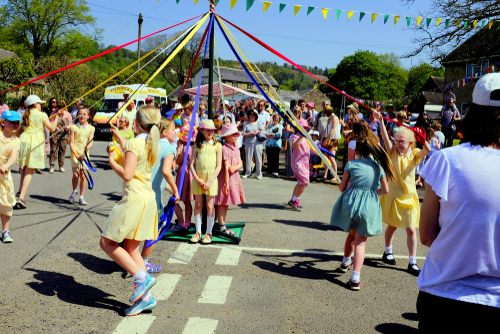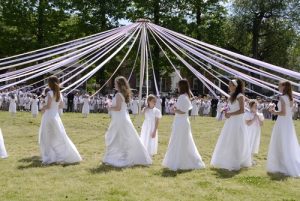
A brief history of the May Day celebrations

Image credit: Wirestock Creators/Shutterstock.com
Like many of Britain’s customs and traditions, May Day has its roots set firmly in pre-Christian times. The ancient Celts marked the changing of the seasons by holding major festivals at the beginning of each period. Beltane or ‘the fire of Bel’, as it was known to the Celts, represented the first day of summer. This was celebrated by lighting bonfires to welcome in the new season. It’s still celebrated today, but we know Beltane much better as May Day, celebrated on, or close to, the 1st of May.
May Day has long been associated with fun, merriment, and, in particular, fertility. It was customary in rural Britain that the day be celebrated by frolicking around a maypole. Each village that held a May Day celebration would also choose its own May Queen. The May Day procession would also be headed up by the cavorting figure of Jack-in-the-Green. It is thought that the figure of ‘Jack’ is a remnant of the past when our ancient ancestors worshipped trees.
However, the pagan roots of the May Day festivities made them an alien concept to both the Church and the State. In 1517, riots followed the banning of the usual May Day celebrations by the crown. It was reported that at least 14 protestors were hanged, with a further 400 plus being sentenced to death. The latter was eventually given a pardon by the ruling monarch, Henry VIII.
Cancellation and Restoration
By 1645, the puritanical Oliver Cromwell had taken control of the country, during the English Civil War. Thus, May Day festivities were brought to an abrupt end. Cromwell described maypole dancing as ”a heathenish vanity generally abused to superstition and wickedness’’. Legislation was quickly passed which outlawed the practice of maypole dancing which saw village maypoles being taken down throughout the country.
However, in 1660, the restoration of the crown saw May Day celebrations return to village greens once again. The new monarch, Charles II, dubbed ‘The Merry Monarch’, was keen to win favour with his new subjects. He ordered the erection of an enormous 40-metre-high maypole in London’s Strand. The pole symbolised the return of fun times and remained standing for almost another fifty years.
Public Holiday
In 1871, May Day was declared a public holiday in Scotland. However, the day off was not introduced to the rest of the UK until 1978. The UK holiday now always falls on the first Monday in May. It was introduced by the then Labour government in recognition of International Workers Day, which just happens to fall on the same day. However, this coincidence hasn’t stopped some of the population from finding new interest in pagan revelries. Maypoles can now be found standing on some village greens, all year round, though it’s more usual to erect them just for the festivities. Barwick in Yorkshire, claims the largest maypole in the country, standing some 30 m high.
The custom of villages crowning their own May queen and appointing a ‘Jack’, still prevails in some parts of the country. In some places of southern England, it wouldn’t be unusual to catch the sight of a ‘hobby horse’ rampaging through the town on May Day. The scary horse figure is a local, dressed in flowing robes, wearing a grotesque mask, which caricatures a horse. Singing or recitals in Latin, bell ringing and Morris dancing, are other happenings that you might expect to find as part of the fun day’s celebrations.
Header image credit: Oscar Johns/Shutterstock.com
If you’ve enjoyed reading this post, why not check out more of the articles in the series by clicking the following link: Why do we…….?






[…] dance that typically celebrates the arrival of spring. The dance is strongly associated with the May Day (1 May) celebrations in Britain. However, it is performed in some parts of Europe to mark other […]